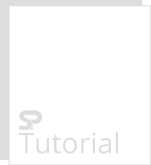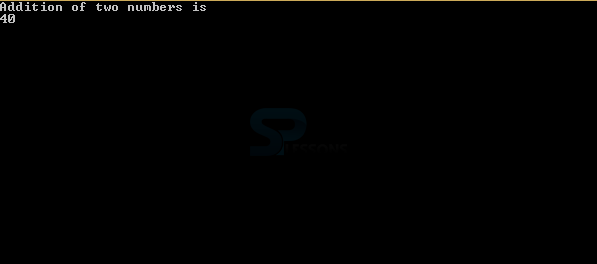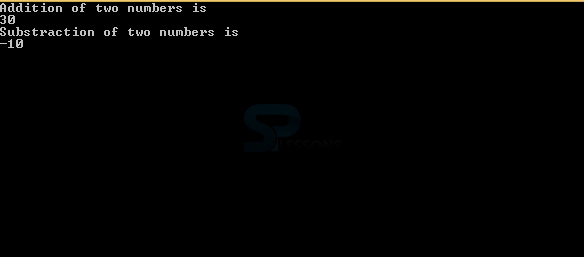 Description
Description
Class is a combination of Member Functions (or) Methods and Variables (or) Data Members. An object is an instance of the class. Class don't have the permission to allocate memory. For this reason, i.e to allocate memory and also to access the features of class in main method we have to create an instance for this class, i.e called as an Object.One class may have more objects but to create an object there class should be created.Following is the syntax to create a class and create an object in VB.Net.
[vbnet]Access_Specifier Class ClassName
'Data Members or Variables Declaration
'Methods
End Class[/vbnet]
[vbnet]
Dim Object_Name as Class_Name= New Class_Name(); 'Declaration of object
Object_Name.Method_Name(); 'Accessing method using the object
[/vbnet]
 Example
Example
Following is an example which describes more about class and object.
[vbnet]
Class Example 'Class Definition
Private a As Integer = 20
Private b As Integer = 20
Public Function AddResult() As Integer
Return a + b
End Function
End Class
Module Module1
Sub Main()
Dim obj As Example = New Example() 'Object declaration
Console.WriteLine("Addition of two numbers is")
Console.WriteLine(obj.AddResult()) 'Accessing the function in the class using object
Console.ReadKey()
End Sub
End Module
[/vbnet]
Output:
Following is a result in the console.
 Description
Description
Inheritance is a one of the most useful feature in the Object Oriented Programming. Inheritance is used to "Get the properties from the base class to derived class".We can derive one or more classes from its Base class. In VB.Net, we have to use "Inherites" keyword to inherit the base class. There are different types of inheritance are there in Object Oriented Programming.
- Single Inheritance
- Multi-Level Inheritance
- Heirarchichal Inheritance
- Hybrid Inheritance
- Multiple Inheritance
 Syntax
Syntax
See the below syntax to know how to work with the inheritance.
[vbnet]
Class A
End Class
Class B : Inherits A
End Class
[/vbnet]
 Example
Example
[vbnet]
Class A 'Class Definition
Public a As Integer = 10
Public b As Integer = 20
Public Function AddResult() As Integer
Return a + b
End Function
End Class
Class B : Inherits A
Public Function SubResult() As Integer
Return a - b
End Function
End Class
Module Module1
Sub Main()
Dim obj As B = New B() 'Object declaration
Console.WriteLine("Addition of two numbers is")
Console.WriteLine(obj.AddResult()) 'Accessing the function in the class using object
Console.WriteLine("Substraction of two numbers is")
Console.WriteLine(obj.SubResult())
Console.ReadKey()
End Sub
End Module
[/vbnet]
Output:
Following is a result to an inheritance concept.
 Points
Points
- Re usability is an excellent feature of inheritance.
- In VB.Net MyBase is nothing but super class.
- Class name should start with Capital letter.





